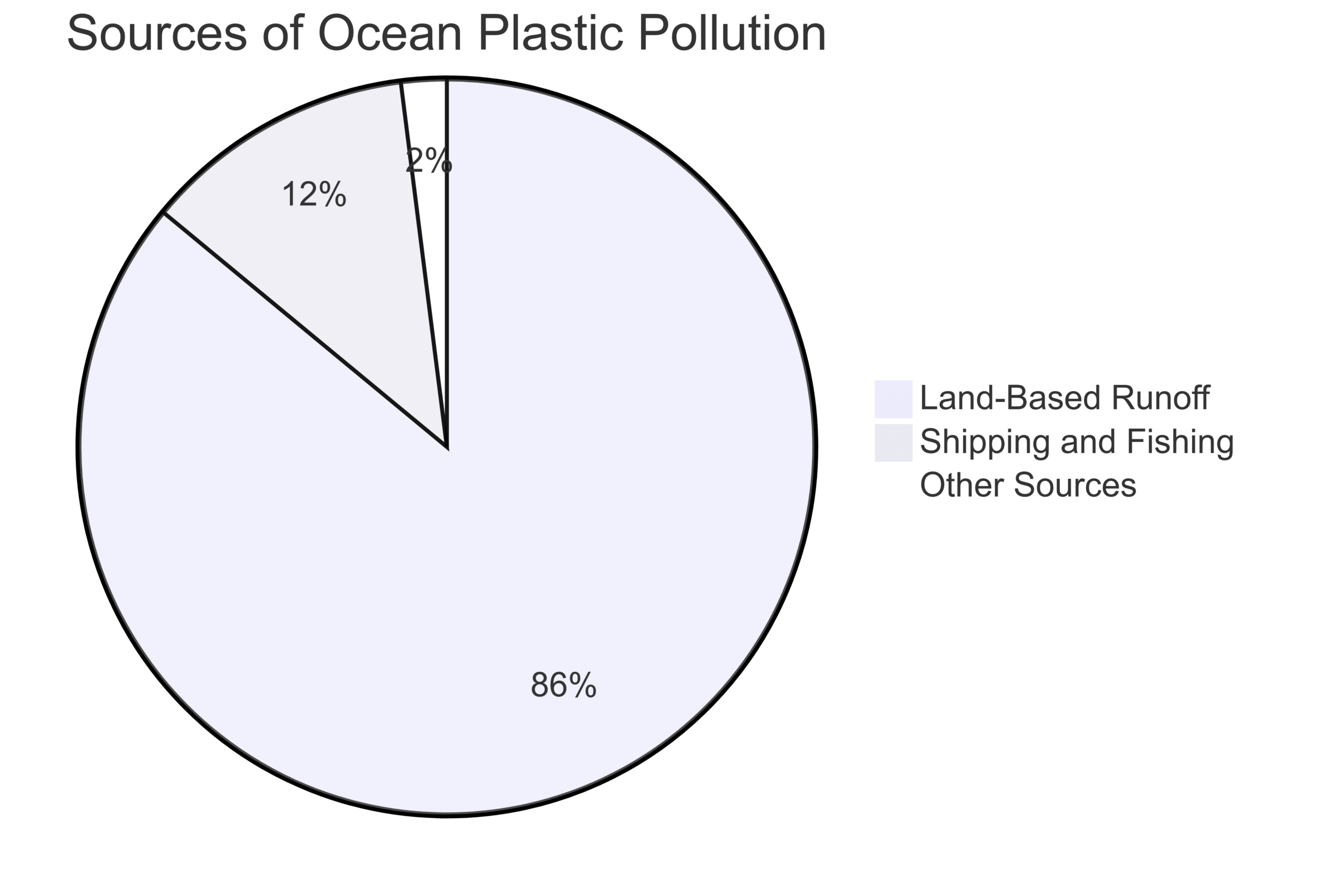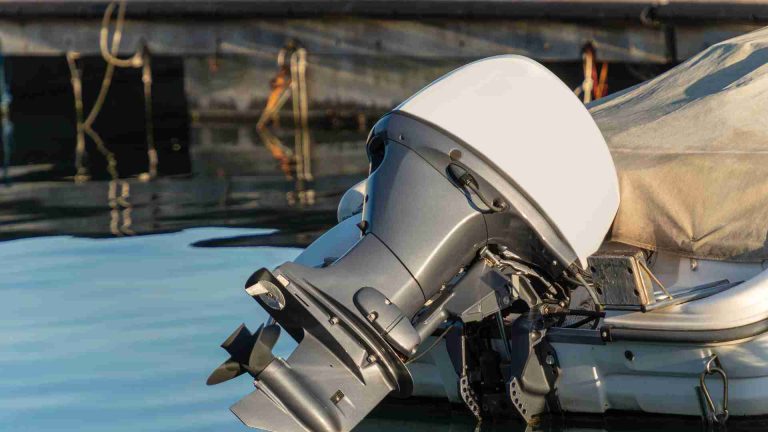Plastic pollution in the ocean: data, facts, consequences
Explore the critical issue of ocean plastic pollution, its devastating impacts on marine life, ecosystems, and human health, and actionable solutions to combat it.
Plastic pollution in the ocean is one of the most pressing environmental challenges of our time. Every year, millions of tons of plastic waste enter marine environments, threatening ecosystems, wildlife, and human health. From single-use bottles to discarded fishing gear, plastic debris accumulates in vast quantities, breaking down into microplastics that persist for centuries. This article delves into the data, consequences, and actionable solutions to address this global crisis, emphasizing the urgent need for collective action to protect our oceans and planet.
The Scale of Plastic Pollution
Global Plastic Production and Waste
Over 430 million tons of plastic are produced annually, with two-thirds discarded after a single use. By 2060, production is projected to triple, exacerbating the crisis. Only 9% of all plastic ever produced has been recycled, leaving the rest to be incinerated, landfilled, or released into the environment. Approximately 11 million metric tons of plastic enter the ocean each year, equivalent to 2,000 garbage trucks dumping plastic daily. This adds to the estimated 200 million metric tons already circulating in marine environments.
Plastic in the Ocean: Key Statistics
- Annual Input: 11 million metric tons of plastic enter the ocean yearly, with 9.5 million tons from land-based sources and 1.75 million tons from shipping and fishing activities.
- Microplastics: An estimated 51 trillion microplastic particles, weighing 269,000 tons, are present in the ocean—equivalent to 1,345 adult blue whales.
- Future Projections: By 2050, plastic is expected to outweigh fish in the ocean if current trends continue.
- Wildlife Impact: Over 50% of seabirds and marine turtles have ingested plastic, and 100,000 marine mammals and 1 million seabirds die annually due to plastic pollution.
- Persistence: Plastics take 500–1,000 years to degrade, breaking into microplastics that never fully disappear.

Sources of Plastic Pollution
Land-Based Runoff
The primary source of ocean plastic pollution is land-based runoff, accounting for 86% of the total. Poor waste management systems, littering, and stormwater discharge carry plastic waste from urban and rural areas into rivers and streams, which transport it to the ocean. Single-use plastics, such as food packaging, bottles, and bags, dominate this category, with 44% of plastic debris in rivers and oceans consisting of bags, bottles, and takeout-related items.
Shipping and Fishing
Maritime activities contribute significantly, with discarded fishing gear (e.g., nets, lines, and traps) and ship debris accounting for 12% of ocean plastic. Abandoned fishing gear, known as “ghost gear,” entangles marine life and persists in the environment for decades.
Coastal Contributions
Coastal areas exacerbate the problem through littering and inadequate waste management. Beaches, tourist hotspots, and coastal communities often lack proper disposal infrastructure, allowing plastics to enter the ocean directly.
Consequences of Plastic Pollution
Harm to Marine Wildlife
Plastic pollution devastates marine life through ingestion and entanglement. Over 100,000 marine mammals and 1 million seabirds die annually from plastic-related causes. Species such as seabirds, turtles, and cetaceans mistake plastic for food, leading to starvation, internal injuries, and death. For example, a whale found off Norway’s coast had 30 plastic bags in its stomach, highlighting the severity of ingestion issues. Entanglement in fishing nets and other debris causes drowning, infections, and mobility loss, affecting 17% of species listed on the IUCN Red List.
Ecosystem Disruption
Plastic pollution alters marine habitats and reduces biodiversity. Floating plastics transport invasive species, disrupting ecosystems and food webs. Microplastics, particles less than 5mm, infiltrate every level of the food chain, from zooplankton to apex predators, accumulating toxins and reducing reproductive success. The Great Pacific Garbage Patch, a massive accumulation of plastic debris spanning twice the size of France, exemplifies how plastics concentrate in ocean gyres, creating ecological dead zones.
Human Health Risks
Microplastics and nanoplastics have infiltrated the human food chain, appearing in seafood, drinking water, salt, and even air. Studies have detected microplastics in human tissues, including blood, lungs, livers, and placentas, raising concerns about health impacts. Plastics carry toxic chemicals like phthalates, bisphenol A (BPA), and polybrominated diphenyl ether (PBDE), which disrupt endocrine systems and are linked to developmental, reproductive, and neurological disorders. Over 4,200 plastic-related chemicals are known to be hazardous, with potential carcinogenic effects.
Economic Impacts
Plastic pollution costs the global economy $6–19 billion annually, affecting fisheries, aquaculture, tourism, and cleanup efforts. Coastal communities reliant on marine resources face declining fish stocks and damaged ecosystems, while tourism suffers from littered beaches and degraded marine attractions. The financial burden of waste management, estimated at $100 billion annually for businesses, underscores the need for systemic change.
Climate Change Connection
Plastic production, derived from fossil fuels, contributes significantly to greenhouse gas emissions. Producing one ton of plastic generates 2.5 tons of carbon dioxide, and incineration releases additional CO2 and methane. By 2040, plastic production and disposal could account for 19% of the global carbon budget, exacerbating climate change and its associated impacts, such as rising sea levels and extreme weather.
| Impact Category | Description | Estimated Annual Cost/Impact |
|---|---|---|
| Wildlife Harm | Ingestion and entanglement | 100,000 mammals, 1M seabirds die |
| Ecosystem Disruption | Invasive species, biodiversity loss | Affects 17% of IUCN Red List species |
| Human Health | Microplastics in food chain, toxic chemicals | Found in human tissues, 4,219 hazardous chemicals |
| Economic Loss | Fisheries, tourism, cleanup costs | $6–19 billion |
| Climate Change | GHG emissions from production/incineration | 19% of carbon budget by 2040 |
Addressing Plastic Pollution: Solutions and Strategies
Improved Waste Management
Effective waste management is critical to reducing plastic pollution. Upgrading infrastructure to prevent leakage from landfills and improving collection systems can significantly decrease the 9.5 million tons of land-based plastic entering the ocean annually. Countries with robust waste management, like those in Scandinavia, demonstrate that high recycling rates and controlled disposal systems can minimize environmental impact.
Circular Economy
Transitioning to a circular economy involves designing plastics for reuse and recycling. Strategies include:
- Eliminating Unnecessary Plastics: Reducing excessive packaging and single-use items like straws and cutlery.
- Promoting Reusables: Encouraging refillable bottles and reusable bags, as seen in initiatives like UNICEF’s reusable container programs in Kiribati.
- Recycling Improvements: Enhancing recycling infrastructure to handle diverse plastic types, as only 10% of plastic is currently recycled globally.
- Alternative Materials: Using biodegradable materials like jute, which is gaining popularity in regions like West Bengal, India.
The UN Environment Programme’s (UNEP) “Turning off the Tap” report estimates that these measures could reduce plastic waste by 80% by 2040, saving $4.5 trillion in environmental and social costs.
Policy and Legislation
Global and national policies are essential for systemic change. The 2022 UN Environment Assembly resolution to create a legally binding agreement on plastic pollution by 2024 is a landmark step. Proposals, such as Rwanda and Peru’s call for a 40% reduction in plastic production by 2040, aim to curb overproduction. Policies like extended producer responsibility (EPR) schemes hold manufacturers accountable for recycling their products, while bans on single-use plastics, as implemented in countries like Canada and the EU, reduce waste.

Individual and Community Actions
Individuals can make a difference through small, intentional changes:
- Reduce Single-Use Plastics: Opt for reusable bags, bottles, and containers.
- Recycle Effectively: Sort waste correctly to maximize recycling efficiency.
- Participate in Cleanups: Join local beach or river cleanups to remove plastics before they reach the ocean.
- Advocate for Change: Support businesses and policies that prioritize sustainability.
Community initiatives, like bulk purchasing to avoid packaging or school programs to reduce plastic use, amplify these efforts. Organizations such as the Oceanic Society and Plastic Pollution Coalition provide platforms for advocacy and action.
Cleanup Efforts
While cleanup initiatives, like The Ocean Cleanup’s efforts to remove plastic from the Great Pacific Garbage Patch, are valuable, they address only 1% of floating plastic. The majority (94%) resides on the ocean floor, making prevention far more effective than retrieval. Technologies to capture microplastics are emerging but remain costly and inefficient, reinforcing the need to stop plastic at its source.
Environmental Injustice and Disproportionate Impacts
Plastic pollution disproportionately affects marginalized communities. “Fence-line” communities near plastic production and waste sites face higher risks of cancer, respiratory diseases, and other health issues due to toxic emissions and groundwater contamination. In the US, Black communities are 75% more likely to live in such areas due to historical redlining and zoning policies. Women are also at higher risk due to exposure through household products and feminine care items, increasing chances of miscarriages and cancer. Exporting plastic waste from wealthy nations to developing countries further exacerbates global inequities, shifting the burden to regions with limited resources to manage it.
The Path Forward: Global Momentum and Hope
The global movement to combat plastic pollution is gaining traction. The UN’s ongoing negotiations for a legally binding agreement signal a unified commitment to change. Innovations in biodegradable plastics, upcycling (e.g., converting plastic bags into battery components), and zero-waste philosophies offer hope. Grassroots efforts, from local cleanups to advocacy campaigns like The People vs. Plastic, empower communities to drive change.
Sylvia Earle’s words, “It is the worst of times but it is the best of times because we still have a chance,” resonate deeply. By reducing production, improving waste management, and embracing sustainable alternatives, we can protect our oceans and planet for future generations.
Conclusion
Plastic pollution in the ocean is a multifaceted crisis with far-reaching consequences for wildlife, ecosystems, human health, and the economy. The data is stark: 11 million metric tons of plastic enter the ocean annually, threatening marine life and infiltrating the human food chain. Yet, solutions are within reach. Through improved waste management, a circular economy, robust policies, and individual actions, we can reduce plastic waste by 80% by 2040. The time to act is now—every step toward reducing plastic pollution is a step toward a healthier planet.
Happy Boating!
Share Plastic pollution in the ocean: data, facts, consequences with your friends and leave a comment below with your thoughts.
Read The 20 Ugliest Fish in the Ocean (With Photos) until we meet in the next article.






